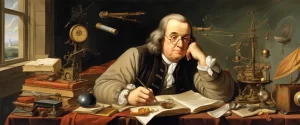
Literature has been a perennial source of enlightenment, providing readers with the opportunity to delve into unique worlds of imagination, emotion, and introspection. Within the realm of fictional narratives, numerous authors have captivated audiences with their thought-provoking works. This study seeks to explore two such literary marvels: “The Alchemist” by Paulo Coelho and “The Knight in Rusty Armor” by Robert Fisher. While these two books seemingly differ in setting and plot, they share an underlying purpose of guiding readers on a transformative journey towards self-discovery and fulfillment. Through their respective protagonists, these novels explore the profound themes of personal growth, the pursuit of one’s true purpose, and the importance of overcoming obstacles in life’s quest for happiness and authenticity.
The Alchemist” transports readers into the mystical realm of Andalusia, where Santiago, a young shepherd, embarks on a quest in search of his Personal Legend. As he navigates through a series of encounters and challenges, Santiago learns valuable life lessons from the people he encounters, most notably the enigmatic alchemist. Coelho’s narrative weaves together elements of spirituality, mysticism, and adventure, guiding readers on a voyage of self-discovery that transcends the pages of the book.
On the other hand, “The Knight in Rusty Armor” takes readers on a different kind of journey, one that is deeply introspective and symbolic. The novel follows the story of the Knight, a chivalrous and honorable character who, ironically, finds himself trapped in his own metal armor. As he struggles to free himself from the constraints of his own identity and ego, the Knight embarks on a transformative pilgrimage towards self-realization. Fisher’s narrative delves into profound themes of self-acceptance, authenticity, and the importance of balancing personal and professional responsibilities.
Despite the apparent differences in setting and narrative structure, both “The Alchemist” and “The Knight in Rusty Armor” are united by their exploration of key themes that resonate with readers on a universal scale. Both works encourage readers to embrace the transformative power of self-discovery and the pursuit of one’s purpose, urging them to challenge societal expectations and venture into the unknown in order to unearth their true selves.
This comparative study will analyze the distinct storytelling techniques employed by Coelho and Fisher to convey these universal themes. Furthermore, it will explore the ways in which their narratives engage readers emotionally, intellectually, and spiritually. By examining these books side by side, we hope to gain a deeper understanding of the resonating messages they convey and the impact they have on readers’ lives.
In conclusion, while “The Alchemist” and “The Knight in Rusty Armor” may differ in their narratives and settings, they both share a common purpose of guiding readers on a transformative journey towards self-discovery, authenticity, and fulfillment. Through our comparative study, we aim to unravel the distinct narrative techniques employed by Coelho and Fisher to convey these universal themes and explore the ways in which their narratives touch the hearts and minds of readers worldwide.
Brief Summary of Two Books
The Alchemist by Paulo Coelho
The Alchemist” is a captivating novel written by Paulo Coelho. The story follows Santiago, a young Andalusian shepherd boy who embarks on a journey to discover his personal legend, which is his true purpose or destiny in life.
Santiago encounters a wise old man who claims to be a King of Salem, Melchizedek, who teaches Santiago about the importance of listening to his heart and following his dreams. Encouraged by this encounter, Santiago sells his sheep and begins his journey to search for treasure in the Egyptian pyramids, which appeared in his recurring dream.
During his travels, Santiago meets an Englishman who is seeking knowledge from a famous alchemist rumored to be in an oasis. Together, they learn about the “Language of the World” and the concept of the Soul of the World, which is the underlying connection between all things.
At the oasis, Santiago falls in love with a girl named Fatima, but his desire to find his treasure eventually overpowers his love for her. He leaves the oasis and meets the alchemist, who becomes his mentor. The alchemist teaches Santiago about the importance of listening to his heart, reading the signs from the universe, and pursuing his personal legend. Throughout their journey across the desert, the alchemist imparts wisdom and teaches Santiago the philosophy of alchemy, the process of transforming the ordinary into the extraordinary.
In the end, Santiago learns that true fulfillment lies not in material wealth but in following your dreams and listening to your heart. He eventually discovers that the real treasure he sought was not in the pyramids but within himself. The book conveys themes of self-discovery, the importance of following one’s dreams, and the interconnectedness of all beings.
The Knight in Rusty Armor by Robert Fisher
The Knight in Rusty Armor” by Robert Fisher is a self-help fable that follows the journey of a knight named Sir Gawain. Gawain is obsessed with his shiny armor and prides himself on his chivalry. However, his armor becomes rusty, and he finds himself unable to remove it.
Determined to regain his former splendor, Sir Gawain embarks on a quest to find the elusive Wizard Merlin, who could potentially help him remove the armor. Along his journey, Gawain encounters various characters, including a loyal horse named Rosinante, a wise hermit, and a peaceful Princess, among others. Each character offers valuable lessons and insights about life, love, and the true meaning of knightliness.
As Gawain progresses through his journey, he realizes that his attachment to material possessions and his obsession with external appearances have hindered his personal growth and happiness. Through his encounters, Gawain learns about the importance of vulnerability, self-reflection, and the power of emotions. He discovers that true strength lies within, not in external appearances or possessions.
“The Knight in Rusty Armor” is a metaphorical tale that encourages readers to reflect on their own lives and challenge societal expectations. It prompts readers to question their own armor and invites them to embrace vulnerability and authenticity, ultimately leading to personal growth and a deeper understanding of oneself.
Comparison between Two Books

Similarities in self discovery
Both The Alchemist by Paulo Coelho and The Knight in Rusty Armor by Robert Fisher explore the theme of self-discovery through parallel journeys taken by the main characters. In both books, the protagonists undergo transformative journeys of self-realization as they search for their true selves and purpose in life.
Firstly, both Santiago in The Alchemist and the Knight in The Knight in Rusty Armor embark on physical journeys that mirror their inner quests for self-discovery. Santiago, a young shepherd, travels from his homeland in search of a hidden treasure, while the Knight sets off on a quest to remove his armor, which symbolizes the emotional barriers he has built around himself. These physical journeys serve as catalysts for their inner exploration and reveal the universality of their quests for self-knowledge.
Secondly, both Santiago and the Knight encounter mentors who guide them on their journeys of self-discovery. In The Alchemist, Santiago meets the mysterious alchemist who imparts invaluable wisdom and teaches him the importance of listening to his heart and following his dreams. Similarly, the Knight in The Knight in Rusty Armor encounters various characters, such as the wise hermit and the silent woman, who provide him with insights and teach him important life lessons. These mentors play crucial roles in helping the main characters overcome their ego-driven desires and understand the true nature of self-discovery.
Furthermore, both Santiago and the Knight realize that their ultimate destination is not the external end goal they initially sought, but rather an inner transformation and self-awareness. Santiago’s pursuit of his treasure leads him to the realization that his true treasure lies in the journey itself and in his connection with the world around him. Similarly, the Knight’s quest to remove his armor teaches him the importance of self-acceptance and the need to embrace vulnerability and authenticity.
Lastly, both novels emphasize the power of intuition and following one’s heart as an important aspect of self-discovery. Santiago learns to trust his instincts and listen to the “language of the world,” which helps him find his personal legend and uncover his purpose. Similarly, the Knight discovers the importance of self-awareness and emotional connection, as he learns to listen to his heart and communicate his feelings honestly.
In conclusion, both The Alchemist and The Knight in Rusty Armor explore the theme of self-discovery through parallel journeys taken by their main characters. Both Santiago and the Knight undergo transformative journeys that lead them to knowledge of their true selves, the importance of intuition, and the need for self-acceptance. These books underline the universal nature of the quest for self-discovery and highlight how inner transformation can be achieved through external experiences and personal introspection.
Divergences in self discovery
The Alchemist by Paulo Coelho and The Knight in Rusty Armor by Robert Fisher are both popular books that explore the theme of self-discovery. While they share similarities in terms of the protagonist’s journey towards self-realization, there are noticeable divergences in the storytelling and the messages conveyed.
Both novels depict a character who embarks on a quest to discover their true selves. In The Alchemist, Santiago, a young shepherd, travels across the desert in search of a hidden treasure, only to discover that the true treasure lies within himself. Similarly, in The Knight in Rusty Armor, the protagonist, a knight known for his invincibility, undertakes a perilous journey to remove his rusty armor, which symbolizes his emotional barriers and ego. Both characters face challenges and learn valuable lessons along the way.
However, the divergence between the two books lies in the fundamental ideologies each author explores during the process of self-discovery. In The Alchemist, Coelho emphasizes the importance of following one’s personal legend or calling in life. Santiago learns that each person has a destiny, and it is essential to pursue it regardless of the obstacles encountered. Coelho illuminates the concept of ‘Personal Mythology’ and encourages readers to listen to their hearts to find their purpose in life.
On the other hand, The Knight in Rusty Armor focuses more on the impact of self-deception and the need for emotional connection. The protagonist’s armor represents his emotional barriers and disconnection from others. Throughout his journey, he learns that true strength lies not in invincibility but in vulnerability and the ability to openly love and connect with others. Fisher emphasizes the importance of self-awareness and the dangers of excessive self-obsession or denial of one’s emotions.
Additionally, the writing styles of both books also differ significantly. Coelho’s prose in The Alchemist is often lyrical and poetic, using metaphorical and symbolic language to convey deeper meanings. This style invites readers to reflect on life’s philosophical aspects and contemplate their own journeys. Conversely, Fisher adopts a more straightforward and light-hearted narrative tone in The Knight in Rusty Armor, making it accessible to a wider range of readers, particularly younger audiences.
In conclusion, while both The Alchemist and The Knight in Rusty Armor explore the theme of self-discovery, they diverge in terms of ideology and writing style. The Alchemist emphasizes the importance of following one’s personal legend and listening to one’s heart, whereas The Knight in Rusty Armor focuses on emotional barriers and the need for self-awareness and connection with others. These divergences make each book unique and offer distinct perspectives on the journey of self-realization.

Conclusion
Both “The Alchemist” by Paulo Coelho and “The Knight in Rusty Armor” by Robert Fisher are highly regarded books, but they offer vastly different experiences.
“The Alchemist” is a philosophical novel that follows the journey of a young shepherd named Santiago as he seeks his personal legend or his life’s purpose. Through his travels and encounters, Santiago learns important life lessons about following one’s dreams, listening to the heart, and recognizing the signs that the universe provides. Coelho’s writing style is captivating and thought-provoking, focusing on themes of self-discovery, spirituality, and the transformative power of love. “The Alchemist” is often praised for its inspirational and motivational qualities, as it encourages readers to pursue their dreams and overcome any obstacles they may face.
On the other hand, “The Knight in Rusty Armor” is a whimsical allegorical tale about a knight who becomes trapped in his own rusty armor after being obsessed with his image as a hero. To break the spell and find his true self, the knight embarks on a journey through different kingdoms, meeting various characters who teach him important life lessons about self-reflection, humility, and the importance of emotional connections. Fisher’s book is often described as a light and quick read, suitable for all ages, but it carries deep messages about self-acceptance and the need for authentic human connections.
Ultimately, the choice between the two books depends on your personal preferences and interests. If you are drawn to spiritual and philosophical themes, “The Alchemist” by Paulo Coelho would be a more suitable option. However, if you prefer a lighter and more whimsical narrative with allegorical elements, “The Knight in Rusty Armor” by Robert Fisher may be the better choice for you. Both books have their merits and offer valuable insights, so it ultimately comes down to what resonates with you the most.


